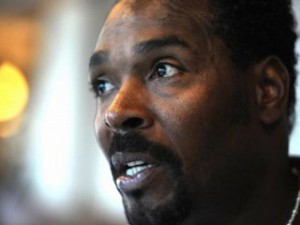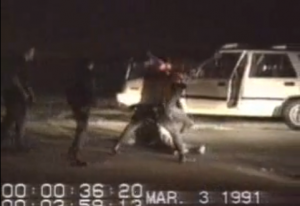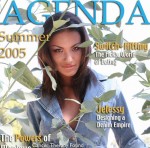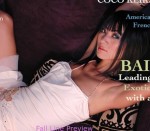20 Years Since Rodney King: A Letter from the Editor
By Kaylene Peoples | May 5th, 2012 | Category: Articles, Letter from the Editor | 2 comments On March 3, 1992, while driving through Lake View Terrace, CA, traveling west on the 210 Freeway, Rodney King with two passengers was pursued by the California Highway Patrol in a high-speed chase at speeds upwards of 115 miles per hour. The chase continued over several freeways and then through residential neighborhoods. After King finally came to a stop, the two passengers (Byrant Allen and Freddie Helms) were placed in a patrol car. Then five officers proceeded to Taser, kick in the head, and senselessly beat Rodney King with their batons. The officers involved in the beatings were Stacey Koon, Laurence Powell, Timothy Wind, Theodore Briseno, and Rolando Solano. During a briefing, these officers claimed they couldn’t follow the usual procedures of tackling and handcuffing King because he was under the influence of the drug PCP, which made him violent and difficult to control.
On March 3, 1992, while driving through Lake View Terrace, CA, traveling west on the 210 Freeway, Rodney King with two passengers was pursued by the California Highway Patrol in a high-speed chase at speeds upwards of 115 miles per hour. The chase continued over several freeways and then through residential neighborhoods. After King finally came to a stop, the two passengers (Byrant Allen and Freddie Helms) were placed in a patrol car. Then five officers proceeded to Taser, kick in the head, and senselessly beat Rodney King with their batons. The officers involved in the beatings were Stacey Koon, Laurence Powell, Timothy Wind, Theodore Briseno, and Rolando Solano. During a briefing, these officers claimed they couldn’t follow the usual procedures of tackling and handcuffing King because he was under the influence of the drug PCP, which made him violent and difficult to control.
 Sound reasonable? Maybe—that is if you buy into the fairytale that all those in law enforcement are only doing their jobs. Oh, if only that nosey amateur cameraman hadn’t captured the whole damn thing on video, maybe this whole “riot thing” never would have happened in the first place! You see, if it weren’t for that video, I, like the rest of Los Angeles residents, would have chalked it up to just another Black man breaking the law, threatening the lives of these poor police officers. I would have believed that these police officers had no choice, that they were only defending themselves and had to use excessive force. Yes, I would have bought into what I had been hearing about all those times prior to the Rodney King beating about other Black victims who were randomly pulled over and mistreated: “The Black suspect deserved what he got. There is no such thing as racial profiling. This is all random.” And my most favorite of all, “We’ve never used excessive force.”
Sound reasonable? Maybe—that is if you buy into the fairytale that all those in law enforcement are only doing their jobs. Oh, if only that nosey amateur cameraman hadn’t captured the whole damn thing on video, maybe this whole “riot thing” never would have happened in the first place! You see, if it weren’t for that video, I, like the rest of Los Angeles residents, would have chalked it up to just another Black man breaking the law, threatening the lives of these poor police officers. I would have believed that these police officers had no choice, that they were only defending themselves and had to use excessive force. Yes, I would have bought into what I had been hearing about all those times prior to the Rodney King beating about other Black victims who were randomly pulled over and mistreated: “The Black suspect deserved what he got. There is no such thing as racial profiling. This is all random.” And my most favorite of all, “We’ve never used excessive force.”
What was on that video contradicted everything the police officers said. The suspect was crawling on the ground, and the officers never tried to handcuff him. By the way, the test results showed no signs of PCP in King’s system. This was the first time a beating of a Black man by police was captured on video and brought to light. Could it be that all those other poor victims of police brutality were actually telling the truth about their unwarranted abuse? One could argue that Rodney King did break the law. He ran from cops while under the influence of alcohol. His documented reasoning was that he would have violated the terms of his parole if he were charged and convicted of a DUI. That is why he fled from the police. There is no excuse for what King did, but we are all flawed. And who hasn’t made a bad choice in judgment at least once in his or her life? I am not here to argue King’s case. That was already done in the courtroom, and unsuccessfully at that. The defense contrived a jury of Rodney King’s non-peers: ten Caucasians, one Hispanic, and an Asian. Rodney King’s offenders received nothing more than a slap on the wrist, a wink, and a pat on the back from the old boys’ club. With irrefutable evidence, the accused were acquitted.

 When the verdict was read, that’s when all hell broke loose! South Central became the scene of riots, fires, and deaths. I remember. I witnessed it as a passenger in a friend’s car while on the freeway peering into the war zone, where violence and looting erupted almost instantaneously upon the broadcast news that four out of the five cops were found “not guilty.” The Blacks of Los Angeles had finally had enough!
When the verdict was read, that’s when all hell broke loose! South Central became the scene of riots, fires, and deaths. I remember. I witnessed it as a passenger in a friend’s car while on the freeway peering into the war zone, where violence and looting erupted almost instantaneously upon the broadcast news that four out of the five cops were found “not guilty.” The Blacks of Los Angeles had finally had enough!
Now 20 years later, a lot has changed. The racial profiling has been minimized and the ratio of senseless beatings of Black suspects has been cut in half, thanks to snoopy amateur sleuths, Youtube, and the local news; nowadays, a dirty cop just can’t get away with what he used to. But have things really changed? The racial climate seemed calm for a while. No civil disobedience overtook our communities for years after the Rodney King riots. Admittedly, there have always been subtle racial tensions, but for the most part they seemed manageable until the unmentionable happened—a Black man was elected President.
Amongst the Blacks in America, we felt a true sense of unity and hope for a better country. We believed that racism and bigotry were finally becoming manageable in our society when Barack Obama won the 2008 presidential election. But being Black in America will always hold unforeseen uncertainties. The Southern, Midwestern, and Northern states will always be a challenge for the person of color. But even the Western states have managed to show their own shocking, less-than-subtle bigotries. With the birth of the Tea Party, the racial disrespect of our President and First Lady, and the overall right wing political mudslinging happening during the current presidential campaign (directed at Obama), how can we go on believing that racism no longer exists? It is spreading like a plague, and the backlash smarts as though we’ve been bitch-slapped. Racism surrounds us, like invisible germs or demons in the fourth dimension. Racism is everywhere. We feel it, but can’t see it. But assuredly, it’s there.


 As I continue with this rant, I will go ahead and admit something to you, Agenda Magazine readers. In the eight years that I have run this online magazine, only five women of color have ever graced its covers. On the first issue was a Chinese actress named Bai Ling. People immediately assumed Agenda was an Asian publication, and it took some real explaining and clever PR to dispel that misconception. The second person of color was a racially ambiguous African-American model, who appeared on the cover in 2005. The third person of color appeared on our Spring 2007 issue. We featured a beautiful, dark-skinned Black model. Our rank plummeted over a million on Alexa within 48 hours of that issue’s launch. It took over a year to recover from that loss in traffic. And I, a multiracial Black woman, was the fourth woman of color; I was afraid that readers would pigeonhole this magazine and dismiss it as being like an Ebony or Essence, when clearly it speaks to a much broader audience. (For the record, both magazines are excellent, but cater to a Black demographic.) And finally this issue, I made the decision to put an African model from Kenya on the cover. (She is the first “Face of the Month” model to make the cover.) I wrestled with my fears. I have worked tirelessly to garner Agenda’s readership and offer diverse, intellectual, and artistic content, thus becoming the long arm that stretches across boarders. I feared that if I put another Black model on Agenda’s cover, the online magazine would plummet in rank again, and that I would have to work really hard to bring it back once more. But I thought about everything that has happened recently: The presidential campaign, seeing the play Camp Logan, and the 20th anniversary of the Rodney King riots; and I made an executive decision—one that I now know was not a mistake.
As I continue with this rant, I will go ahead and admit something to you, Agenda Magazine readers. In the eight years that I have run this online magazine, only five women of color have ever graced its covers. On the first issue was a Chinese actress named Bai Ling. People immediately assumed Agenda was an Asian publication, and it took some real explaining and clever PR to dispel that misconception. The second person of color was a racially ambiguous African-American model, who appeared on the cover in 2005. The third person of color appeared on our Spring 2007 issue. We featured a beautiful, dark-skinned Black model. Our rank plummeted over a million on Alexa within 48 hours of that issue’s launch. It took over a year to recover from that loss in traffic. And I, a multiracial Black woman, was the fourth woman of color; I was afraid that readers would pigeonhole this magazine and dismiss it as being like an Ebony or Essence, when clearly it speaks to a much broader audience. (For the record, both magazines are excellent, but cater to a Black demographic.) And finally this issue, I made the decision to put an African model from Kenya on the cover. (She is the first “Face of the Month” model to make the cover.) I wrestled with my fears. I have worked tirelessly to garner Agenda’s readership and offer diverse, intellectual, and artistic content, thus becoming the long arm that stretches across boarders. I feared that if I put another Black model on Agenda’s cover, the online magazine would plummet in rank again, and that I would have to work really hard to bring it back once more. But I thought about everything that has happened recently: The presidential campaign, seeing the play Camp Logan, and the 20th anniversary of the Rodney King riots; and I made an executive decision—one that I now know was not a mistake.
 Our cover model Lilian Maina is not only worthy of being on Agenda’s cover, but she also represents what this country is really about: beauty, diversity, acceptance of differences, tolerance, and hope . . . not fear, not conformity, and not complacency. If the owner of this free press can’t even see past some perceived stigma, how can I ever expect anyone else to? It’s time we pushed past our fears to do what’s right. When a model has something so special you can see it in her eyes, her face, her skin, her “relatability,” it is rare and should be recognized. This unspoken rule that “Blacks on a magazine cover” will cause you to lose your readers, well . . . maybe those readers don’t need to be a part of this magazine. I challenge each and every one of you to look past the outside of a person and look inside his or her soul. We are more than the melanin that divides us, and this country. Yes, it has been 20 years since Rodney King. Let’s not make it another 20 years before we stop judging people by the color of their skin. Somebody seeing the magazine for the first time the other day saw this issue’s cover and remarked, “Oh, it’s a Black magazine.” I responded, “No. It’s a fashion and lifestyle magazine that is read by all races.” Don’t assume. Assume = ass-u-me. When you assume, you make an ass out of you and me (wink, wink).
Our cover model Lilian Maina is not only worthy of being on Agenda’s cover, but she also represents what this country is really about: beauty, diversity, acceptance of differences, tolerance, and hope . . . not fear, not conformity, and not complacency. If the owner of this free press can’t even see past some perceived stigma, how can I ever expect anyone else to? It’s time we pushed past our fears to do what’s right. When a model has something so special you can see it in her eyes, her face, her skin, her “relatability,” it is rare and should be recognized. This unspoken rule that “Blacks on a magazine cover” will cause you to lose your readers, well . . . maybe those readers don’t need to be a part of this magazine. I challenge each and every one of you to look past the outside of a person and look inside his or her soul. We are more than the melanin that divides us, and this country. Yes, it has been 20 years since Rodney King. Let’s not make it another 20 years before we stop judging people by the color of their skin. Somebody seeing the magazine for the first time the other day saw this issue’s cover and remarked, “Oh, it’s a Black magazine.” I responded, “No. It’s a fashion and lifestyle magazine that is read by all races.” Don’t assume. Assume = ass-u-me. When you assume, you make an ass out of you and me (wink, wink).









[…] Peoples has decided to broadcast this problem this issue by publishing her “20 Years Since Rodney King: A Letter from the Editor,” where she outlines the parallels of the Rodney King Riots and the ongoing events filled with […]
[…] Theatre in Downtown LA. Was it a coincidence that the racially sensitive play coincided with the 20th anniversary of the Los Angeles’s Rodney King riots; or by design scheduled to run through the second quarter of our presidential campaign, a campaign […]